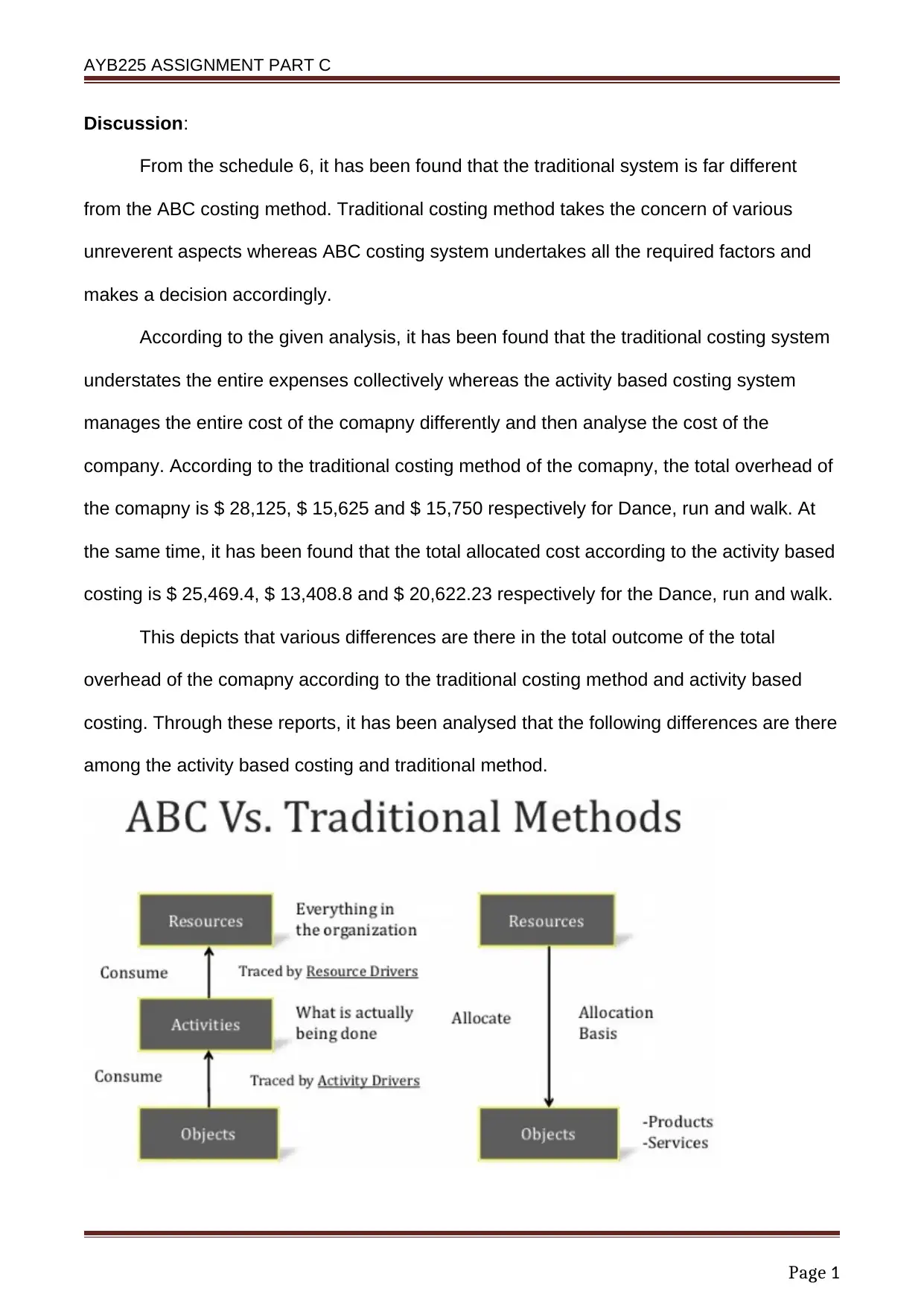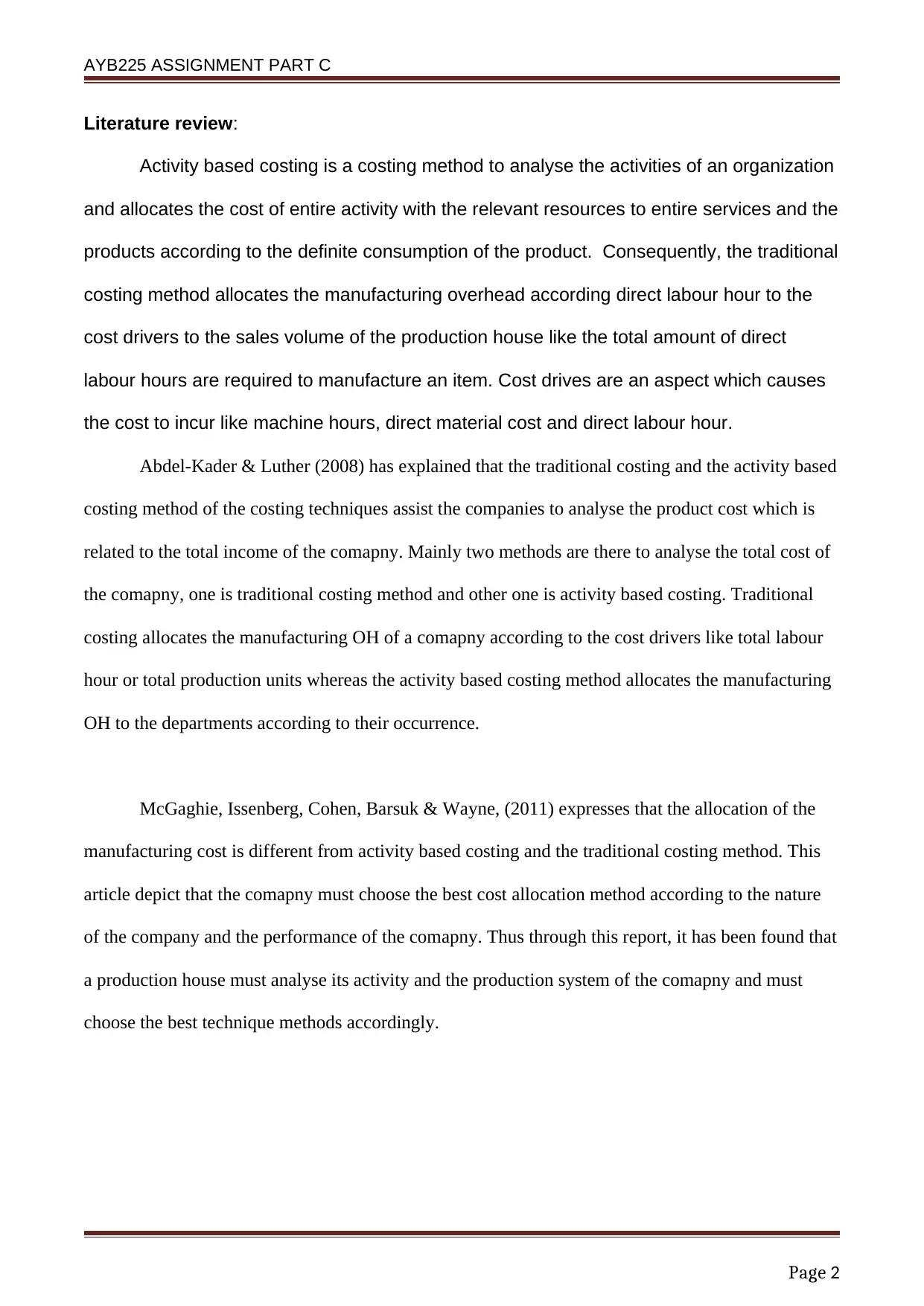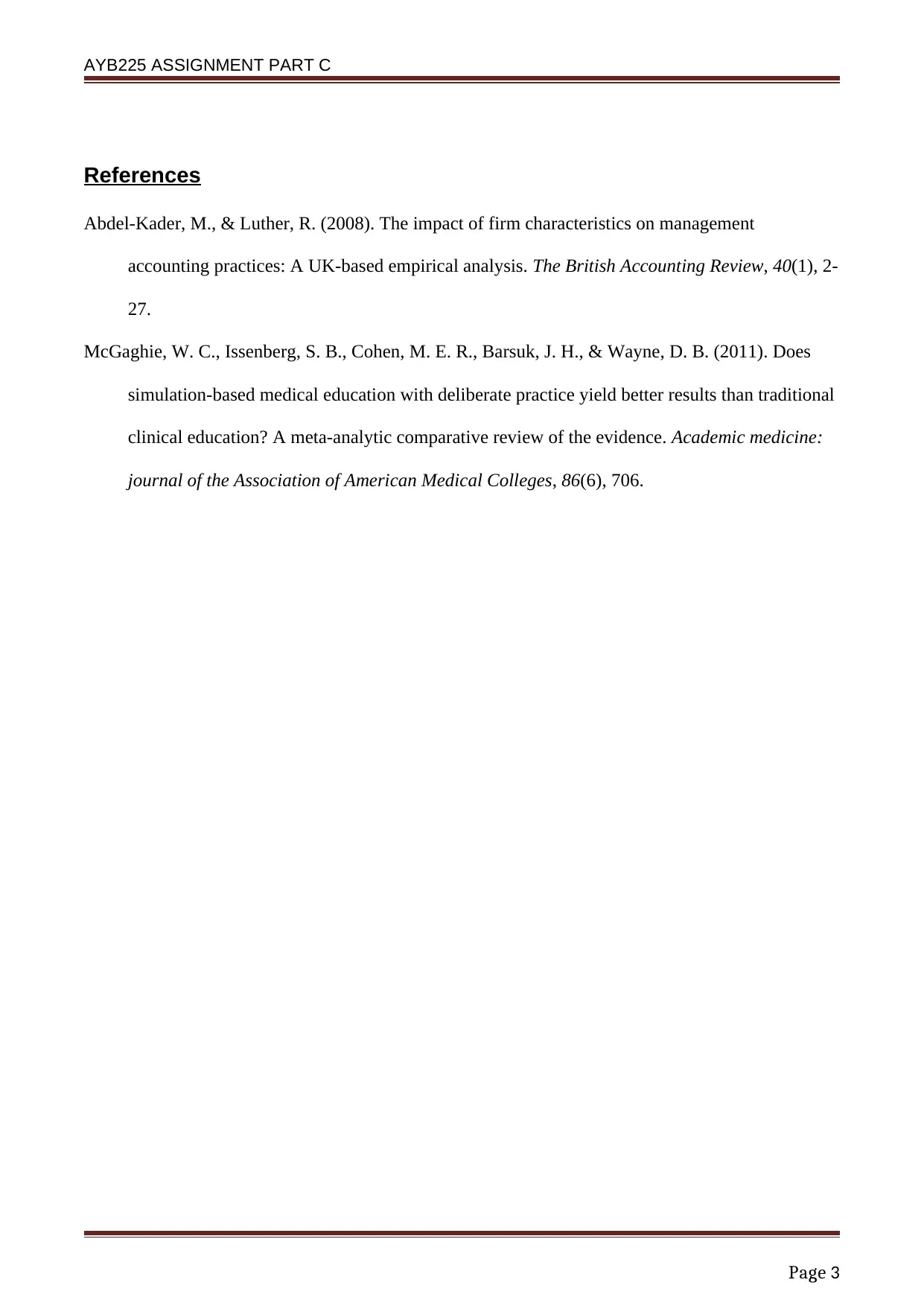Analysis of Traditional vs. ABC Costing Methods in Finance
VerifiedAdded on 2020/05/11
|3
|639
|122
Discussion Board Post
AI Summary
The assignment explores the distinct approaches of traditional costing and activity-based costing (ABC) in financial management. It highlights how traditional costing allocates manufacturing overhead based on direct labor hours or production units as cost drivers, while ABC assigns costs to activities with relevant resources, reflecting actual product consumption. The analysis includes a comparison of allocated overheads for dance, run, and walk activities under both methods, revealing significant differences in total outcomes. Literature review references indicate that choosing the appropriate costing method depends on company characteristics and performance. Overall, this discussion emphasizes the importance of selecting suitable costing techniques to accurately analyze production costs and enhance decision-making.
1 out of 3










![[object Object]](/_next/static/media/star-bottom.7253800d.svg)